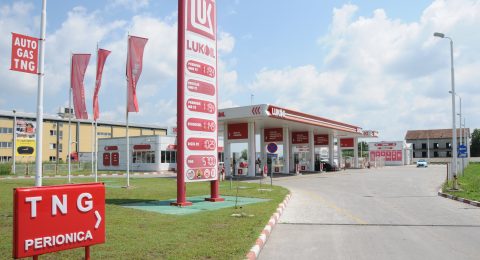By Fatma Ahmed & Amina Hussein
Recently, the world trend has turned toward renewable energy to overcome the decline of the conventional resources of energy as well as the climate change caused by greenhouse emissions. However, one of the public debates around renewable power spread is to what extent it can be competitive while renewable Resources suffered from high operation and maintenance (O&M) costs.
These costs have fallen sharply over the past decade due to the deployment of new technologies, economies of scale, competitive supply chains and growing developer experience. However, they are still considered high. “Although the renewable energy almost requires less overall maintenance costs, but still a key element for the total cost,” Hamdy Hafez, Financial and Reporting Manager at HeidelbergCement stated to Egypt oil and gas (EOG).
According to the International Renewable Energy Agency (IRENA), wind turbine prices have fallen by 55-60% since 2010 and solar photovoltaic (PV) prices have fallen by around 90% since the end of 2009. IRENA stated, in another report, that the growth in deployment of renewable power generation technologies continued in 2019, as costs continued to fall, indicating that renewable power generation increasingly became the default source of least-cost new power generation. Since 2000, renewable power generation capacity worldwide has increased 3.4-fold, from 754 gigawatts (GW) to 2 537 GW by the end of 2019 (IRENA, 2020a). however, does this mean that renewable energy may replace the conventional one?
Wind Power: Offshore and Onshore
The total installed wind-generation capacity onshore and offshore in the world has jumped from 7.5 GW in 1997 to some 564 GW by 2018, according to IRENA’s latest data. In 2016, wind power contributed 16% of electricity produced from renewables. However, its O&M costs are still high due to its turbines. Ihab Elmassry, Renewable Energy Expert, stated to EOG that “the O&M costs for wind farms are very expensive. For instance, the onshore wind farm projects in Europe the O&M cost for wind ranges between $33/kW/year to $56/kW/year”
Onshore wind turbines acquire the largest share of the total installed costs, making up between 64% and 84% of the total costs. The O&M costs play a key role for onshore wind power as it makes up 30% of the global weighted average levelized cost of electricity (LCOE), according to IRENA. The global weighted average (LCOE) for offshore wind recorded $0.053 per Kilowatt hour in 2019. According to IRENA data, the onshore wind power LCOE declined by 9% between 2018 and 2019. In addition, IRENA reported that the LCOE of an onshore wind farm is also impacted by the economic lifetime of the project and the cost of capital. So that the reduction of these costs is very important in lowering LCOEs.
On other hand, offshore wind farms are more expensive than onshore wind due to the complexity of installation, operation and maintenance. Global offshore wind power makes up less than 5% of the total deployed wind. This means that O&M costs are higher than those for onshore wind. The global weighted-average LCOE of offshore wind reached $0.115/kWh in 2019, with a 9% reduction year-on-year in 2019. Additionally, representative ranges for current projects fell between $70-129/kW per year during 2018.
Solar Energy
There are two technologies for solar energy; solar photovoltaic (PV) and concentrated solar power (CSP). Regarding solar PV, its O&M costs have fallen in recent years. However, the share of these costs in the LCOE has risen in certain markets due to the fast decline of capital costs. According to IRENA data, the global weighted-average LCOE of utility scale PV plants recorded $0.068/kWh in 2019, with a 13% reduction year-on-year in 2019. For the CSP, its O&M costs are higher than solar PV and onshore wind. IRENA reported that the range of O&M costs for CSP plants currently is between $0.02/kWh to $0.04 kWh. However, its share in the LCOE is not large.
IRNEA conducted an analysis stating that the average O&M costs of the LCOE reached 18% in G20 countries. Elmasry explained that “although solar energy enjoys the lowest annualized life cycle costs, the permanent availability is its weak point and that is why there are great efforts are being done to improve and commercialize energy storage technology.” He added that solar energy needs certain batteries to store the energy which means more O&M costs.
Hydropower
Hydropower always needs high capital. Its costs mainly rely on the construction and procurement costs related to electromechanical equipment. The global weighted-average LCOE of newly commissioned hydropower projects recorded $0.047/kWh in 2019, increasing by 6% from 2018 in which it recorded $0.045/kWh and 27% higher than the projects commissioned in 2010. Its O&M costs range from 1% to 4% of the investment cost per kW per year. Maintenance represents 20% to 61% of O&M costs.
Geothermal
Geothermal deployment is still slight. The O&M costs are higher than solar PV and wind due to the decline of reservoir pressure around the production well which reduces power-generation productivity. The global weighted-average LCOE of the projects reached $0.073/kWh in 2019. IRENA estimates the average O&M costs over the 25-year life of the project of $115/kW per year. O&M costs include make-up and re-injection over the 25-year life of the project.
Bioenergy
IRENA reported that Bioenergy contributed 10% of the total final energy consumption and 1.9% of global power generation in 2015. The global weighted-average LCOE of bioenergy for power projects recorded $0.066/kWh in 2019. O&M costs represent 2% to 6% of the total installed costs per year.
Upcoming Years
According to IRENA, as the sector is growing, increased competition in O&M provision has emerged and has resulted in a variety of strategies to minimize O&M costs. However, it still faces a lot of obstacles, especially in Egypt. Elmassry added to EOG that “PV and Wind have lower reliability compared to conventional power generation as it differs according to the resource availability”.
For his part, Hafez recommended that O&M costs should be controlled by applying an effective cost management system which should be supported by an effective database management. He added also that it should be followed up with accurate energy production forecasts and predicting component failure. Despite the experts’ agreement that renewable resources should be maximized, they insisted that it is hard to replace the conventional resources of energy completely.








